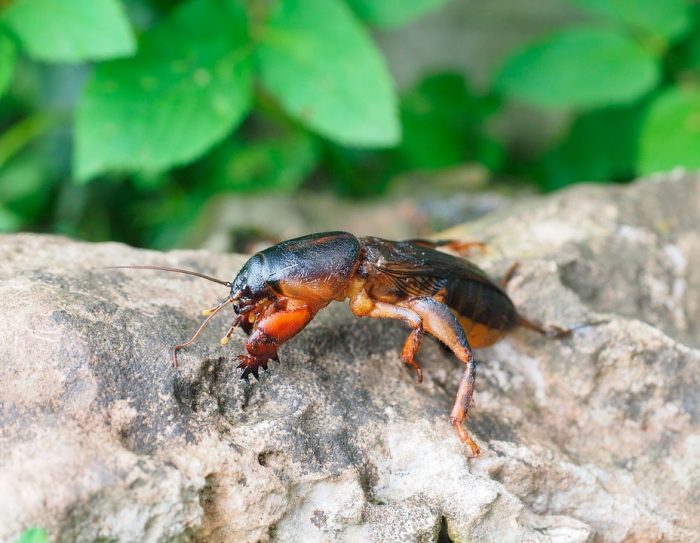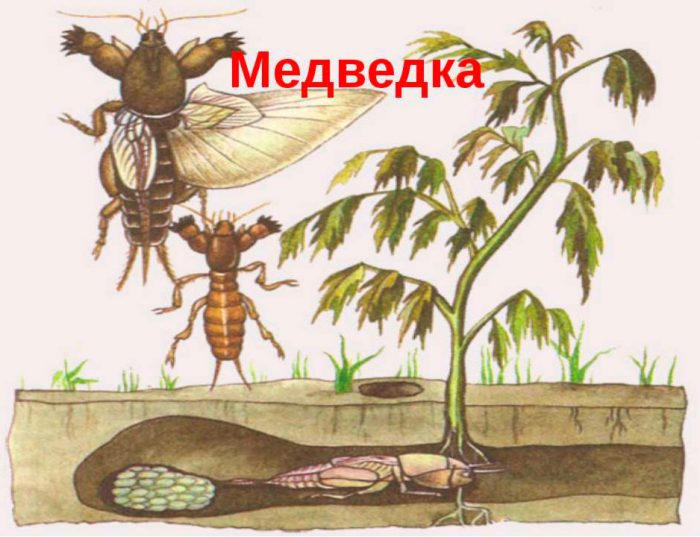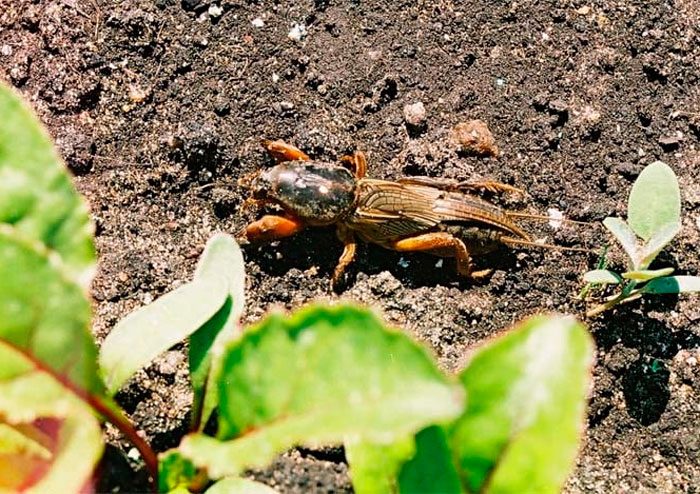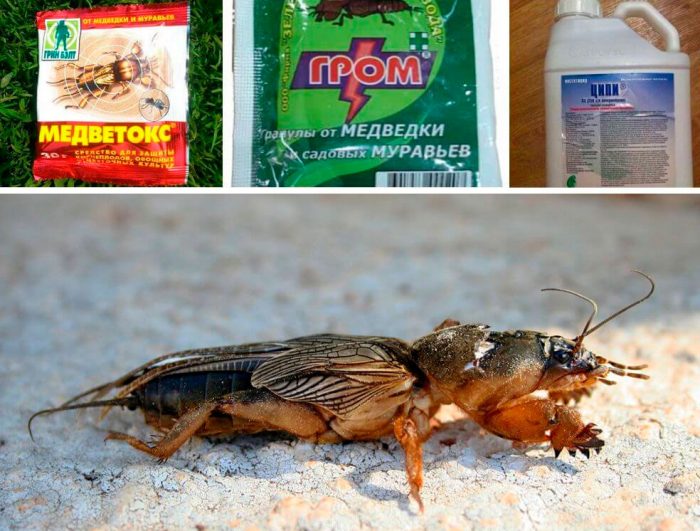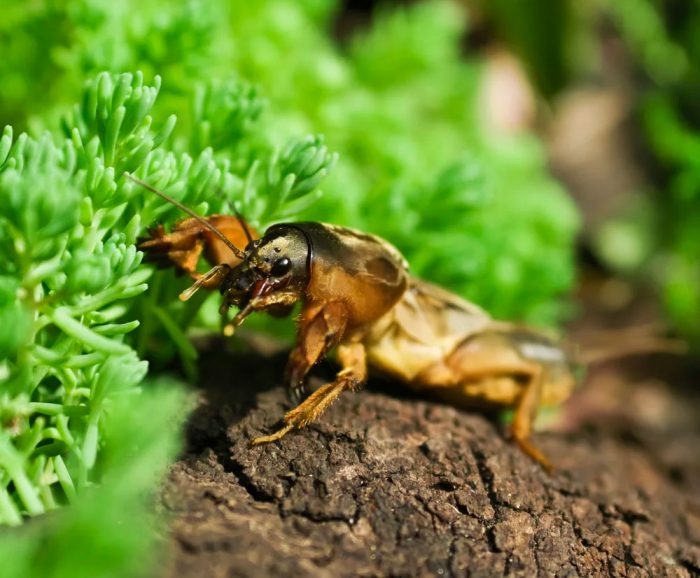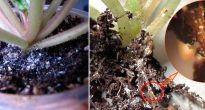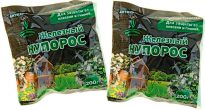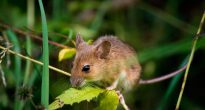The bear (Gryllotalpidae) is a beetle belonging to the family of large burrowing insects of the Orthoptera order, there are more than 110 species in it. The common bear (Gryllotalpidae gryllotalpa), also called cabbage, is most often found in summer cottages. On the territory of Europe, this bear is not found only in Norway and Finland, however, it also lives in North Africa, Kazakhstan, Asia and the Caucasus, while the pest prefers sandy soil warmed by the sun.
Medvedka spends most of its life underground, while it gets to the surface only in the dark. For the winter, it buries itself in a dung heap, where it is quite warm or buries itself in the soil to a depth of about two meters or even more. This insect eats both roots and earthworms, but in general it is omnivorous. It can harm not only carrots, beets or potatoes, but also onions, cabbage, corn, oats, cucumbers, lettuce, garden strawberries, barley, rye, as well as flowers, melons and legumes.
Content
Features of the bear
The garden bear is a fairly large insect, the length of which can reach 50 mm. However, some gardeners claim that they saw larger individuals, the length of which was about 15 centimeters.
The bear's cephalothorax is 3 times shorter than its soft abdomen, the shape of which is spindle-shaped, and in diameter it reaches about 10 mm. The abdomen is painted in a dark brown shade, and at its end there are cerci, which are paired filamentous appendages, the length of which is about 10 mm. The chest has reliable protection in the form of a durable shell; in case of danger, an insect can hide part of its head under it. On the head there are large compound eyes, and 2 more tentacles, powerful jaws and long antennae mustaches.
The front pair of limbs, on which the claws are located, has such a structure that allows the cabbage to dig the ground. It has wings, but their muscles begin to work only in the presence of warm air, which is why such an insect flies quite rarely, but at the same time it is an excellent swimmer. In the dark, especially during the mating season, you can hear cabbage girls singing, while they emit loud trills, chirp and chirp. Insects make all of these sounds by rubbing their wings.
Bears lay egg-laying near the soil surface, while they equip a nest approximately 6x6 centimeters in size. In one such nest there can be up to 500 eggs, reaching 0.4–0.5 cm in diameter and having a dark yellow color. After only 15 days, larvae emerge from them.The shape of the body in the larva and in the adult is very similar, and it is colored gray. It will take several years for the larva to become an adult insect.
How to deal with a bear in the garden
If you do not know whether bears live on your site, carefully examine its surface. If on it you find small mounds consisting of earth rolled into lumps in a peculiar way, then this is a sure sign of the presence of a pest. After rain, these mounds are most clearly visible. These insects are most active in May, at this time they get out of the already heated soil. Therefore, it is in May that it is recommended to make traps on the site; for this, they dig several not very deep holes into which fresh manure or chopped straw is placed. After some time, adults climb into these pits to arrange their egg-laying, and the larvae that appear later will first feed on straw or manure. After 20-30 days, manure or straw is carefully pulled out and destroyed by fire.
To cleanse your area of the pest, it is recommended that you find all the eggs. Since the nests are shallow, you can find them while digging in the soil. Those ovipositions that were found are carefully removed and placed in a bucket, after which they are burned. Try to prevent the female from climbing to the surface of the site while searching for nests. In order to destroy it, take any special chemical preparation and decompose it little by little in each of the passages that lead from the nest.
In order to destroy an adult, you can use another method. To do this, after the discovery of egg-laying, it is poured with water, in which soap is previously dissolved. As a result, all the passages dug by the pest should be filled with liquid. The soap solution is capable of destroying both the larvae and the female, if during processing she will be located in one of the aisles. In the event that you do not manage to get rid of the female, then after a while she can return to the same place and again make a nest there. To prepare a soap solution, you need to combine 1 liter of water and 5 grams of washing powder or 1 gram of household soap crushed on a grater. You can also fill the moves with a solution consisting of 1 tbsp. l. vegetable oil and 4 liters of water or from 1 liter of water and 10 grams of kerosene (take 30 grams of solution for one mink).
In the event that pests appeared on the site at the end of the growing season, then you need to wait for the onset of autumn. At a soil temperature of at least 8 degrees, you will need to dig pit traps, the depth of which can vary from 0.5 to 0.6 meters, their walls and bottom are covered with plastic wrap. After that, manure is placed in the pits, which has already begun to rot, and on top they are covered with boards or a piece of slate. After the onset of persistent frosts, remove the manure from the trap and scatter it over the surface of the site, all pests that decide to spend the winter in warm manure will die from the cold. It is noticed that already at a temperature of 5 degrees, the bear becomes inactive, and at lower temperatures it dies.
Remedies for Medvedka (preparations)
You can clean your area of cabbage with the help of special chemicals. However, experts advise using them only when other methods of controlling insects have proved to be ineffective. The following drugs cope most effectively with cabbage caps:
- Medvetox... This product is available in the form of granules that taste attractive to the bear. It contains poison, which is harmful to the insect. For an adult to die, it only needs to eat 1 pellet.
- Bugbear... This drug is one of the most powerful in the fight against the bear. It is used in the form of a solution, while it is absolutely harmless to the environment.
- Chops... This remedy quite effectively fights cabbage, while for humans it is relatively safe. It is produced in the form of granules of a saturated color, they are placed in the passages that are dug by insects.
- Thunder... This tool is highly effective, but it contains carcinogens, therefore, it must be used very carefully. Only 3 or 4 granules are placed in the passages made by the pest.
- Grizzly... The drug is based on Diazonin, it comes in the form of granules, which have the color of bread. They are used extremely carefully, the granules are put into the passages dug by the pest.
- Bankcol... Such a contact-intestinal insecticidal preparation is low-toxic to humans. He paralyzes the bear, as a result, she cannot eat and dies after 2 or 3 days.
- Phenoxine plus... Granules of this drug have a taste and smell that attract a bear, they are laid out in several pieces in the passages made by the insect.
- Boverin... This biological agent does not harm both beneficial insects and warm-blooded animals at all. It destroys the pest due to the fact that it causes a fatal disease in it.


Watch this video on YouTube
Folk remedies
To destroy cabbage, you can use not only pesticides and mechanical methods, they are also destroyed using folk remedies that are absolutely safe for humans, animals and beneficial insects, of which there are quite a few, for example:
- Onion infusion... In order to cleanse your area of the pest, it is recommended to spill it with infusion of onion husks several times with a break of 7 days. To make this infusion, you need to combine a bucket of water with 1 kg of waste and onion husks. After 4-6 days, the infusion will be ready, it will only be necessary to strain it. Before use, the product is diluted with water in a ratio of 1: 5, and the soil is shed with it after the rain has passed.
- Traps... To get rid of this dangerous insect, gardeners often use honey or beer traps. A glass jar or a cut-off plastic bottle is dug into the ground, and their inner surface is coated with honey for bait by ¼ of the height. The trap is covered from above with an iron sheet and covered with a small amount of straw. Instead, you can dig a 0.5 L glass jar at an angle into the soil, into which 100 ml of fresh beer is poured. From above it is covered with an iron sheet or thick cardboard. After 7-10 days, the traps dig up and destroy the pests that are in them. You can make traps with manure, they are described in detail above.
- Eggshell... You can also get rid of the bear with the help of egg shells. To begin with, it is dried, crushed and combined with fried sunflower oil. 1 tbsp is placed in each landing groove or hole. l. this mixture during sowing seeds or planting seedlings. Kapustyanka will certainly want to taste the "treat", which will destroy her, plus the whole egg shell is an excellent food for plants.


Watch this video on YouTube
Prevention measures
Many gardeners and gardeners know firsthand that it is much easier to prevent a bear from settling on a site than to get rid of it. There are a number of preventive measures that can help protect your garden or garden from pests:
- It is recommended to dig up the area to the depth of the shovel bayonet every year in autumn with the onset of cold weather. Thanks to this, adult bears, as well as their larvae, will end up on the soil surface and die from low temperatures.
- Many experts advise against fertilizing the soil with manure. The fact is that the bear most often ends up in the garden with this fertilizer, in which she prefers to arrange nests and winter. If necessary, poultry manure can be used instead of manure.
- Cabbage dwellers prefer to settle in those areas where the soil is well warmed up.That is why it is recommended to cover the surface of the site with a layer of light-colored mulch, for example, sawdust or straw. Due to this, the soil temperature will decrease, and the site will become unattractive to the pest.
- Medvedka can be scared away. It is noticed that it does not tolerate the smell of cilantro, parsley, calendula, garlic, coriander, marigolds and chrysanthemums. Therefore, these plants are recommended to be planted between rows of garden crops. The insect also tries to bypass the fresh alder foliage, as well as the needles, so it is recommended to dig it into the grooves along the perimeter of the beds. Some summer residents recommend making deep grooves around the beds and pouring naphthalene into them, this can also scare off the cabbage.
- To scare the bear away from the greenhouses, it is recommended to use a mixture of 50–70 milligrams of kerosene and 1 kilogram of sand (this amount is enough for 1 square meter of the garden). To prepare the mixture, the sand is first combined with kerosene and everything is mixed well. Then a few shovels of dry soil are added to the mixture and everything is thoroughly mixed again. During the planting of seedlings, the resulting mixture is scattered over the surface of the soil, which is then loosened to mix kerosene and sand with the top layer of earth.
- If, during the planting of seedlings, its root system is treated with a suspension of Prestige or Aktara, then the harmful insect will bypass these plants.
- They also scare off the cabbage in a rather unusual way, for this you need a fish. When planting seedlings in open ground, one small fresh fish should be placed in each hole. After the fish starts to rot, the unpleasant aroma that appears will scare off the pest. However, most often in this case, he leaves not far.
- If the culture has a compact unbranched root system, then you can protect it from the bear with the help of a plastic bottle, from which the throat is cut off. To begin with, the bottle is dug into the planting hole, and then the plant is planted in it. The bottle is able to protect not only the roots, but also the shoots of the garden crop from the insect.
- It is recommended to attract natural enemies of this harmful insect to your site, these include: hedgehogs, lizards, centipedes, shrews, moles, ants, ground beetles and birds (rooks, starlings, storks and crows). Try to choose the most harmless of them and attract them to your garden or vegetable garden, then the cabbage will never settle on your site.
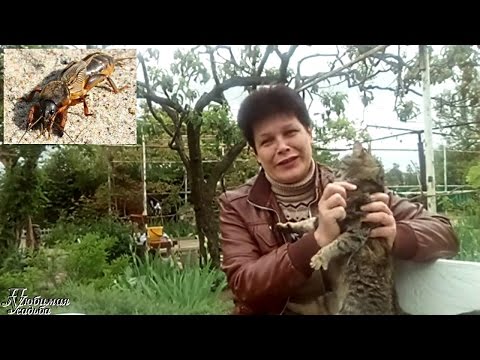

Watch this video on YouTube

